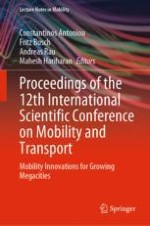This book presents the proceedings of the 12th International Scientific Conference on Mobility and Transport (mobil.TUM 2022) held on 5–7 April 2022 in Singapore and organized by Technical University of Munich Asia. It presents articles in builds on the interdisciplinary approach in mobility and transportation systems for academia and industries. The topics represent the strong synergy between data analytics, new communication concepts, traffic management, modelling, and simulation to enable inspiration from the latest innovations and explore new directions where public transit is headed to meet the rising challenge of rapid urbanization. It caters to researchers and practitioners who have keen interest in the latest development of transportation systems which can sustain the rapid rise in urbanization.
